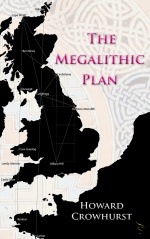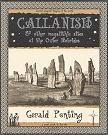<< Text Pages >> Oymaagac Mound - Artificial Mound in Turkey
Submitted by Andy B on Tuesday, 24 August 2010 Page Views: 5345
Multi-periodSite Name: Oymaagac Mound Alternative Name: Oymaağaç, Nerik ?Country: Turkey Type: Artificial Mound
Nearest Town: Vezirköprü Nearest Village: Oymaağaç
Latitude: 41.207700N Longitude: 35.429200E
Condition:
| 5 | Perfect |
| 4 | Almost Perfect |
| 3 | Reasonable but with some damage |
| 2 | Ruined but still recognisable as an ancient site |
| 1 | Pretty much destroyed, possibly visible as crop marks |
| 0 | No data. |
| -1 | Completely destroyed |
| 5 | Superb |
| 4 | Good |
| 3 | Ordinary |
| 2 | Not Good |
| 1 | Awful |
| 0 | No data. |
| 5 | Can be driven to, probably with disabled access |
| 4 | Short walk on a footpath |
| 3 | Requiring a bit more of a walk |
| 2 | A long walk |
| 1 | In the middle of nowhere, a nightmare to find |
| 0 | No data. |
| 5 | co-ordinates taken by GPS or official recorded co-ordinates |
| 4 | co-ordinates scaled from a detailed map |
| 3 | co-ordinates scaled from a bad map |
| 2 | co-ordinates of the nearest village |
| 1 | co-ordinates of the nearest town |
| 0 | no data |
Internal Links:
External Links:
Artificial Mound in Cankiri, Turkey. Hittites' holy city Nerik to emerge.
Late in the second millennium B.C., as the Hittites were experimenting with bronze, they built a holy city called Nerik near the Black Sea, according to evidence being slowly gathered by archeologists.
Today, excavators at the Oymaağaç mound in the Black Sea city of Samsun's Vezirköprü district are reveling in their potential find, believing the evidence is mounting and Oymaağaç will be unveiled as the holder of Nerik.
The scent of Nerik
The geographical location of Oymaağaç, the impressive representative building on top of the acropolis, and especially the tiny cuneiform writing style on the tablet fragments all suggested the excavators might find Nerik here, said Thomas Zimmerman, representative from Anakara's Bilkent University and acting chair of the department of archeology and history of art.
Zimmerman, who is a prehistory specialist focusing on the Anatolian bronze ages, said the tiny cuneiform writing resembled that on clay tablets from the Boğazköy/Hattusha archives dealing with Nerik. He said the writings, along with several ritual texts from the Hittite period, suggested Oymaağaç had to be equated with the important Hittite cultic city of Nerik.
Bronze Age cuneiform fragments
According to Zimmermann, the most prominent findings to date at the Oymaağaç dig, which started two years ago and was expected to finish in 10 years, were the fragments of cuneiform tablets. He said they were the northernmost written sources found in Hittite Anatolia. Also, he said they had found a number of bullae, which are lumps of clay molded around a cord and stamped with a seal to prevent tampering with the contents of a container, from the Hittite imperial period in the late second millennium.
He said the current endeavors on the site focused on a large representative late Bronze Age building - probably a palace or temple - that was well visible in the geomagnetic survey conducted two years ago. Also, he said they were excavating late Iron Age domestic structures, including pits and the foundation walls of several dwellings, set into the debris of the preceding monumental Hittite structure. He said they yielded evidence of weaving and cloth production on a large scale, as evidenced by numerous loom weight and spindle whorls. The latest features discovered at Oymaağaç were several cist graves with multiple burials from the Roman era, Zimmerman said.
The details
In the excavation, consisting of 20 specialists and 15 local laborers from the nearby villages, Bilkent University, Samsun University and Institute of Near Eastern Archaeology of Freie University Berlin are working together.
Previous to the survey, which started in 2005, and excavation of Oymaağaç that started in 2007, the mound was initially discovered in the early 70's by professor Bahadır Alkım and professor Önder Bilgi, the long-term field directors of the İkiztepe excavation, which has been going on for 34 years.
They also emphasized the significance of this place, which revealed its potential after the discovery of several fragments of cuneiform tablets and sealed bullae retrieved during the surveys conducted under the auspices of the Institute of Near Eastern Archaeology of Freie University Berlin in 2005 and 2006, which also is in charge of the current excavations led by associate professor Rainer Czichon.
The present major collaborators at university level are Ankara's Bilkent and Samsun Universities. Zimmerman's second collaborator from Bilkent is Ben Claasz Coockson as the senior draftsman, with valuable field experience accumulated at countless digs in Anatolia and Syria in the past decades.
"Long-term research missions largely depend on private funding issued by companies and private donators," said Zimmermann, who is also the initiator of an accompanying metal analysis project to learn more about the Hittite's largely obscure metal consumption in the second millennium B.C.
Source: Turkish Daily News
Note: Obsidian used as ancient scalpel found in Turkey
You may be viewing yesterday's version of this page. To see the most up to date information please register for a free account.
Do not use the above information on other web sites or publications without permission of the contributor.
Click here to see more info for this site
Nearby sites
Click here to view sites on an interactive map of the areaKey: Red: member's photo, Blue: 3rd party photo, Yellow: other image, Green: no photo - please go there and take one, Grey: site destroyed
Download sites to:
KML (Google Earth)
GPX (GPS waypoints)
CSV (Garmin/Navman)
CSV (Excel)
To unlock full downloads you need to sign up as a Contributory Member. Otherwise downloads are limited to 50 sites.
Turn off the page maps and other distractions
Nearby sites listing. In the following links * = Image available
58.3km NE 39° Ikiztepe Ancient Village or Settlement
70.4km SSE 152° Amasya Museum* Museum
75.5km SSE 167° Oluz Mound* Ancient Village or Settlement
84.3km SSW 209° Çorum Archaeological Museum Museum
86.4km E 90° Tekkekoy Caves Cave or Rock Shelter
106.0km SSW 202° Pazarli Ancient Village or Settlement
107.2km S 189° Shapinuwa Ancient Village or Settlement
114.4km ESE 121° Horoztepe Ancient Village or Settlement
121.1km SSE 166° Masat Hoyuk Ancient Village or Settlement
124.6km SSW 210° Alacahöyük* Ancient Village or Settlement
125.2km SSW 209° Alacahöyük Hittite Dam* Misc. Earthwork
129.1km SSW 206° Eskiyapar Ancient Village or Settlement
130.3km SSW 200° Örükaya Roman Dam Ancient Mine, Quarry or other Industry
137.4km SW 225° Boyali Hoyuk Ancient Village or Settlement
147.7km SSW 207° Yazilikaya* Carving
148.9km SSW 208° Hattuşa* Ancient Village or Settlement
154.6km SE 144° Bolus Ancient Village or Settlement
155.8km S 182° Karakiz* Carving
158.3km SSW 192° Usakli Mound* Ancient Village or Settlement
162.7km SSW 199° Yozgat Ethnographic Museum Museum
165.1km S 191° Kerkenes Ancient Village or Settlement
170.4km W 271° Kahin Tepe* Ancient Village or Settlement
171.9km S 188° Cadir Hoyuk* Ancient Village or Settlement
178.7km S 185° Alisar Hoyuk* Ancient Village or Settlement
190.5km S 181° Sarikaya Roman Bath* Ancient Village or Settlement
View more nearby sites and additional images






 We would like to know more about this location. Please feel free to add a brief description and any relevant information in your own language.
We would like to know more about this location. Please feel free to add a brief description and any relevant information in your own language. Wir möchten mehr über diese Stätte erfahren. Bitte zögern Sie nicht, eine kurze Beschreibung und relevante Informationen in Deutsch hinzuzufügen.
Wir möchten mehr über diese Stätte erfahren. Bitte zögern Sie nicht, eine kurze Beschreibung und relevante Informationen in Deutsch hinzuzufügen. Nous aimerions en savoir encore un peu sur les lieux. S'il vous plaît n'hesitez pas à ajouter une courte description et tous les renseignements pertinents dans votre propre langue.
Nous aimerions en savoir encore un peu sur les lieux. S'il vous plaît n'hesitez pas à ajouter une courte description et tous les renseignements pertinents dans votre propre langue. Quisieramos informarnos un poco más de las lugares. No dude en añadir una breve descripción y otros datos relevantes en su propio idioma.
Quisieramos informarnos un poco más de las lugares. No dude en añadir una breve descripción y otros datos relevantes en su propio idioma.